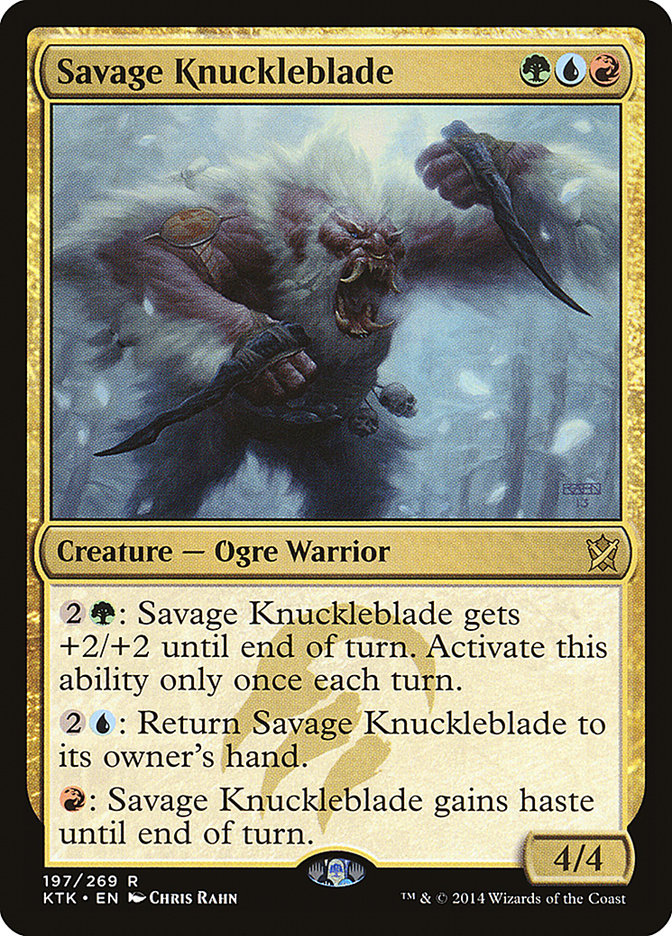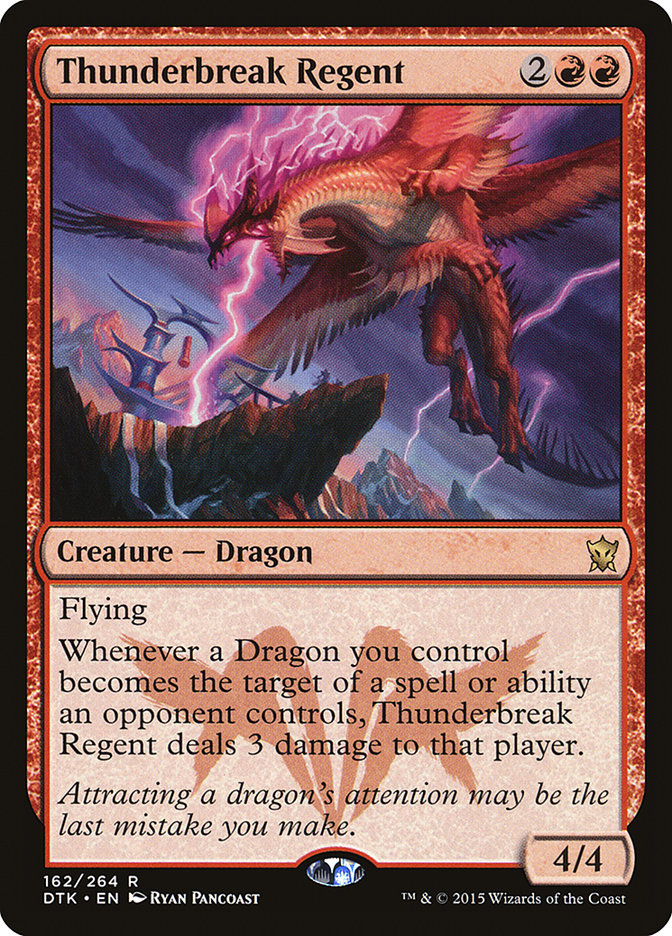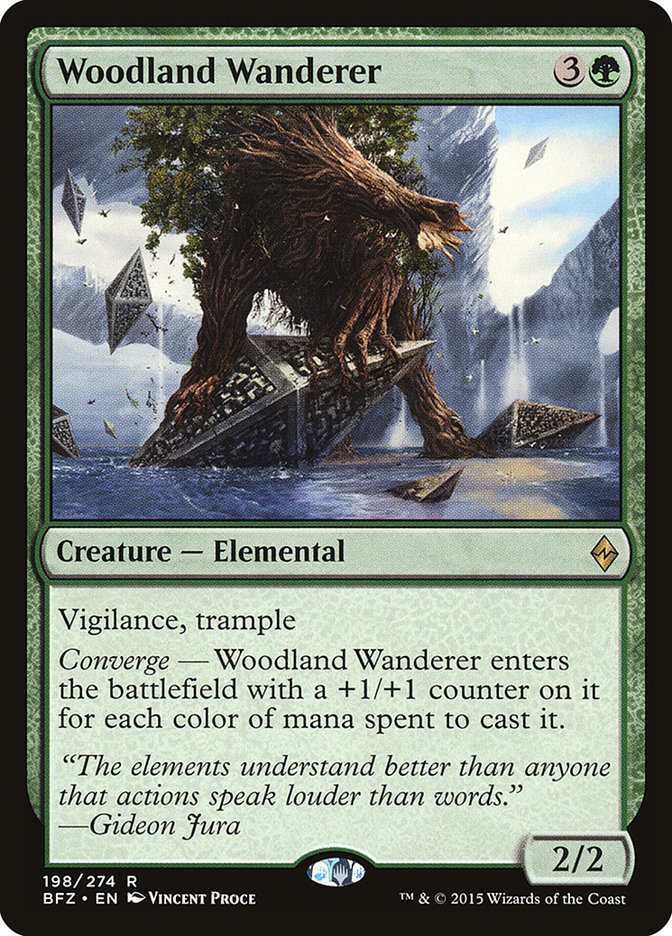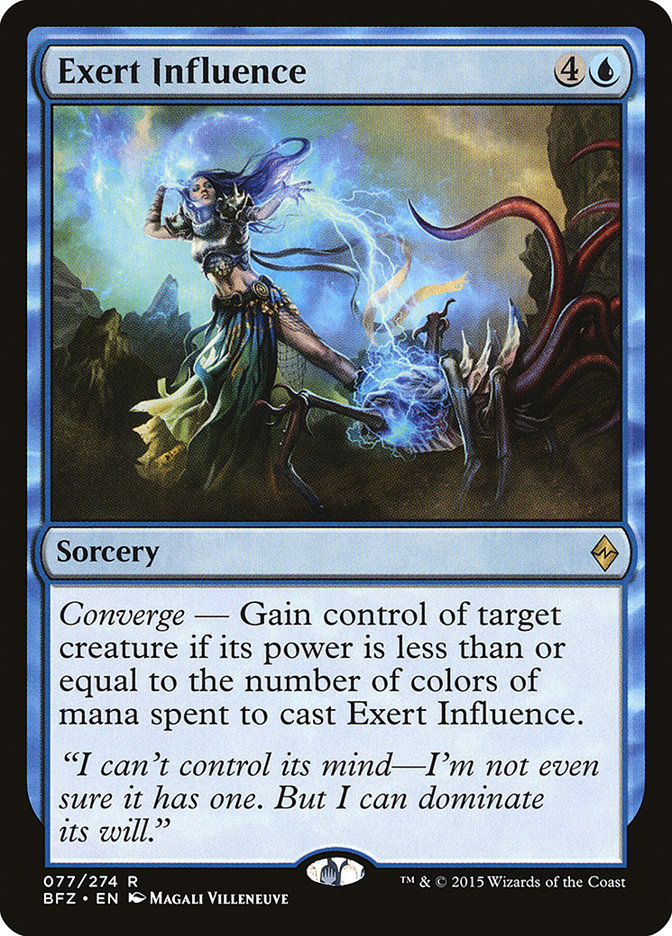So this past weekend I played in the #SCGINVI in Las Vegas. It was my first actual tournament since #PTBFZ, barring Magic Online leagues, and I was excited to get a chance to actually shuffle up some cards again. It didn’t hurt that even if I didn’t do well, I’d be in Vegas, which happens to be one of my favorite places in the world.
My trip to the event was pretty entertaining in itself. I ended up driving out on Thursday night with my wife Natalie and our friend Josh. Despite running into a patch of stormy weather – a rarity in drought-stricken California – we were making good time on the long drive until we pulled off the 15 to get gas. When we went to get back on the freeway, we found the traffic all stopped and a utility vehicle and a police car were preventing us from getting back on the road. Someone in the car in front of us got out and went to talk to someone in the utility vehicle, then just walked back to their car, so we assumed they were told it was just a short delay.
Five or ten minutes passed, though, and there was no movement whatsoever. We decided to back up off the on-ramp and instead take the access road that runs parallel to the freeway to try to avoid the blockage. When we drove by, we saw some kind of huge trailer on the road, flanked by police cars, with what looked like big cone-like object in the middle.
We tried to find information online about what was actually happening, but had no luck. Once we actually got back on the highway at the next exit, it was totally empty. For probably fifteen minutes we didn’t even see another car – and this is on the only major highway that goes between SoCal and Vegas, which is usually packed!
It was kind of surreal. The whole scene – the trailer surrounded by a police escort, the blockaded highway, and then the empty stretch of road for miles – felt like something out of a movie.
Did I mention we’d just bought Alien Fresh brand beef jerky at the gas station? It suddenly seemed so appropriate.
Then a couple hours later, we passed a guy walking along the side of the road – at almost midnight, in the middle of the desert, twenty miles from any exit in either direction. But we’d just seen an alien convoy, so it didn’t even seem that weird.
As I mentioned in my article last week, my last minute playtesting had revealed some serious problems with the previous version of Temur Black I was planning on playing, so I made some dramatic adjustments to my deck in the days leading up to #SCGINVI. I shifted away from a big-creature plus Stubborn Denial tempo plan to a much grindier style of deck that focused on recursion and planeswalkers, largely to combat Jeskai Black and its similarly recursive removal options.
Here’s what I played:
Creatures (21)
- 4 Rattleclaw Mystic
- 2 Tasigur, the Golden Fang
- 4 Den Protector
- 4 Deathmist Raptor
- 2 Jace, Vryn's Prodigy
- 2 Nissa, Vastwood Seer
- 3 Woodland Wanderer
Planeswalkers (4)
Lands (25)
Spells (10)

This was still very much a work in progress even as I sat down for the player meeting on Friday morning. I was actually counting out my deck as I was writing it down on the deck registration sheet and was confused when my land count on paper came out to 24 but I was holding 25 in my hands, only to find that I was shuffling up five copies of Wooded Foothills. Oops. I ended up adding a second copy of Sunken Hollow at the last minute in order to increase my blue and black source counts, as well as to give me more fetchable lands in long games. Not exactly precision manabase construction, but it worked out alright.
In the Standard rounds of the #SCGINVI, I played against Four-Color Rally, Abzan, and two Jeskai Black decks – one with Mantis Riders and one without. While I beat both the Rally and Abzan decks quite handily, awkwardly enough despite my deckbuilding changes to improve my chances against Jeskai, both of those were matches that I lost.
My match against the Riderless Jeskai deck was extremely close. We played a thirty minute game 1, in which I was eventually ground out by a Soulfire Grand Master returning Crackling Doom that I could never quite get off the battlefield. I think I might have won the game if I’d played slightly differently. When I cast a Tasigur on around turn 5, I decided to leave a Deathmist Raptor in my graveyard alongside a Kolaghan’s Command.
My reasoning was that the game could easily come down to a resource grind, and I wanted access to the recursive creature later on. But I ended up flipping another Raptor with my first activation, which meant that I was already two activations away from getting the Kolaghan’s Command back. I failed to draw another removal spell before my opponent got Crackling Doom plus Soulfire Grand Master online, and while my Raptors provided me with some respite from the loop, I ultimately succumbed many turns later.
In the second game, after an early resource exchange, I used a Dispel to counter Crackling Doom and protect a Kiora in order to get further ahead. Unfortunately, this left me open to an end step Ojutai’s Command returning Dragonmaster Outcast the following turn. My only removal in hand at the time was Roast, and while I had a Den Protector to return a Kolaghan’s Command from my graveyard and push me even further ahead in cards, I could never find a removal spell that could actually kill the single Dragon the Outcast had a chance to produce.
Kind of ironic, don’t you think?
My match against the Mantis Rider Jeskai Black deck showed me that I had probably biased my deck just a bit too much toward beating the more controlling version. Between maindeck and sideboard, I only had access to three copies of Murderous Cut that could kill Mantis Rider, and it turns out that probably isn’t quite enough. I got run over by multiple early Mantis Riders in both games, which had me going back to the proverbial drawing board regarding my removal options before the event was even over.
One thing that I also noticed was that I sideboarded out my Woodland Wanderers in every matchup I played, since all of them were playing black and had cheap ways to remove them. I mentioned in my article last week that I was on the fence about them already, but chose to include them largely due to their strength against Atarka Red. I have since won every match I’ve played against Atarka Red without the help of Woodland Wanderer at all, and almost every other deck in the format plays black, so I’m feeling like it’s time for them to go.
It was sad enough for me to move away from playing Savage Knuckleblade and Thunderbreak Regent, but Woodland Wanderer too? I think it says a lot about the state of Standard when even I’m not willing to play a huge efficient green monster in my deck. Removal is just too good to justify playing any kind of midrange creatures that don’t essentially have spells tacked on as well.
It actually kind of reminds me of the time when Jace, the Mind Sculptor and Dismember were both in Standard. You basically played Goblin Guides or Primeval Titans, but nothing in between. Oh, and Squadron Hawks and Stoneforge Mystic, of course. The fact that Dismember could show up in literally every deck thanks to its Phyrexian mana cost is a lot like Murderous Cut being able to be played in essentially every deck thanks to the completely ridiculous mana fixing of fetchlands and Battle lands. I think that building decks in the current environment is something of an interesting puzzle in theory, but in practice every deck getting to play ultra-efficient removal spells doesn’t end up creating the best environment.
Speaking of ultra-efficient removal spells, I ended up playing old faithful in Modern, and registered Naya Zoo:
Creatures (27)
- 1 Birds of Paradise
- 4 Tarmogoyf
- 4 Wild Nacatl
- 4 Noble Hierarch
- 4 Knight of the Reliquary
- 3 Qasali Pridemage
- 3 Scavenging Ooze
- 4 Loxodon Smiter
Lands (22)
Spells (11)

I hoped to play against the fair portion of the field, or at least have my linear matchups against things like Affinity and Infect, rather than Amulet Bloom or G/R Tron. I got my wish to some extent, and beat Esper Control and Infect, while losing to Merfolk and Scapeshift.
The Merfolk matchup was kind of funny. I lost game 1 after losing the die roll and getting narrowly outpaced by a pair of Aether Vials and a couple of lords, before a Kira, Great-Glass Spinner put the nail in the coffin by shutting down my removal. In game 2, I kept a one-land hand with a Noble Hierarch, and had a Wild Nacatl and Grim Lavamancer join her on the battlefield on my second turn. My opponent had Spreading Seas for my Stomping Ground and Vapor Snag for my Noble Hierarch while I never drew another land, leaving my Nacatl and Grim Lavamancer as a pair of 1/1s with no abilities that just had to look on as I got beaten down by a Cursecatcher pumped by a Merfolk Reejerey. #FeelsBadMan.
Scapeshift may very well be the actual worst matchup out there for Naya Zoo, since so many of your cards are terrible against them in game 1, and you don’t even get very much help from the sideboard. It was the last round of day one, playing for a spot in day two, and as soon as my opponent suspended a Search for Tomorrow on the first turn I knew I was done for.
I actually had a brief window of hope in game 2 when I had a Blood Moon in play at sixteen life. My opponent destroyed it with Nature’s Claim and then cast Scapeshift with seven lands in play, saying “deal eighteen to you.” I told him I’d go to two, and he looked at me puzzled until I informed him that I gained four life from his Nature’s Claim on by Blood Moon.
“Oh, right, that’s what that card does.”
Sadly, I didn’t quite have lethal damage in play on my turn, and his last remaining card in hand was a Stomping Ground, so I died anyway.
If I’d had more time to devote to Modern testing, I might have looked at trying a version of Naya with the Knight of the Reliquary + Retreat to Coralhelm combo in order to close out games faster against decks like Scapeshift or G/R Tron. One of the strengths of Naya is its individually powerful cards and lack of reliance on synergies, though, so perhaps I could even see just playing Retreat as a sideboard card in place of Blood Moon, probably alongside something like Negate to help both disrupt the opponent as well as to protect your own combo kill. Maybe if something from Amulet Bloom gets banned, at least…
I have already given quite a bit of thought to the changes I want to try for my Standard deck, though. There are a couple of different directions I’ve considered taking the deck, though all of them keep the same basic shell.
Here’s one take:
Creatures (19)
- 4 Rattleclaw Mystic
- 2 Tasigur, the Golden Fang
- 4 Den Protector
- 4 Deathmist Raptor
- 3 Jace, Vryn's Prodigy
- 2 Nissa, Vastwood Seer
Planeswalkers (4)
Lands (25)
Spells (12)

This version pushes the deck in the direction of leveraging Jace more effectively, with more cheap spells like Roast and the proactive Duress taking the place of Dispel. Duress clearly works much better with Jace both in terms of filling your graveyard to flip him faster as well as giving you something productive to recast, and also helps clear the way for your planeswalkers in advance rather than forcing you to wait for an extra mana to protect them.
Jace also works quite well with Exert Influence. I actually had a game in the #SCGINVI in which I flipped my Jace, flashed back Exert Influence from my graveyard on my opponent’s face-down Den Protector, and then used Den Protector to return a Roast from my graveyard that I cast to kill his Siege Rhino. I managed to win that game, unsurprisingly.
But you don’t need to cast Exert Influence more than once for it to swing a game. Just stealing an Anafenza, Siege Rhino, or Mantis Rider can really turn the tide of a game. I like the fact that it gives the deck a way to leverage the mana acceleration of Rattleclaw Mystic that isn’t just a threat that dies to opposing removal – it’s removal that happens to also turn into a threat. And if you can recur it with Jace or Den Protector – hey, more power to you.
One big weakness I’ve found with this deck in my short time playing with it is the lack of lifegain. Between fetchlands, Crackling Dooms, Draconic Roars, plus Goblin and Thopter tokens and the like, there’s a lot of incidental damage going around in Standard, and it really adds up. I did a lot of searching for options to help mitigate the pain, but there’s not really much available that isn’t dedicated lifegain like Feed the Pack or Jaddi Offshoot.
That’s one of the big strengths of white in this Standard format – the ability to play cards like Soulfire Grand Master, Siege Rhino, Seeker of the Way, or Siege Rhino – cards that are powerful in their own right and also incidentally also gain life. Once you add black in the mix, you get Shambling Vent as well, not to mention the access to Murderous Cut I was were talking about earlier – oh and hey, we’ve got all this life to play with, so how about Painful Truths? It is perhaps no wonder that many of the most successful decks in this Standard play both colors. In fact, of the sixteen decks between the Top 8 of the #SCGINVI and the Standard Open in Las Vegas this past weekend, only a single one didn’t play both white and black – Christopher Juliano’s R/B Dragons deck.
Maybe I need to rethink this whole “always playing green” thing. Or maybe I just need to suck it up and play Abzan…
Nah. What fun would that be?





